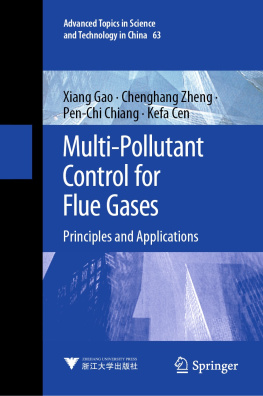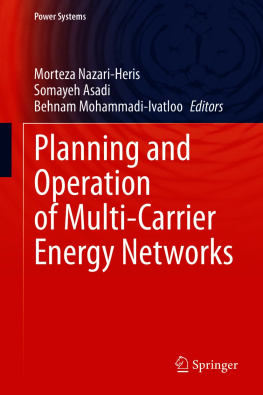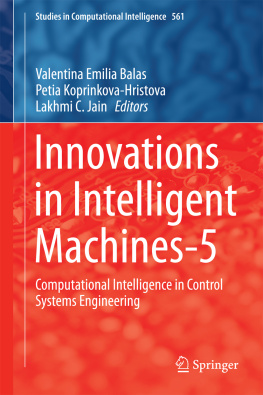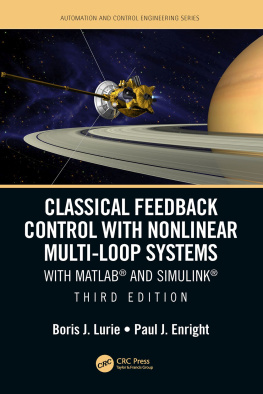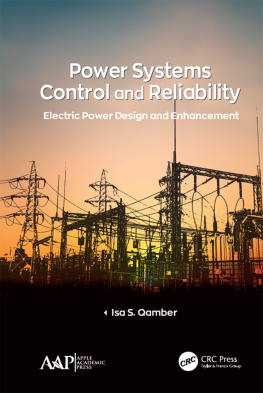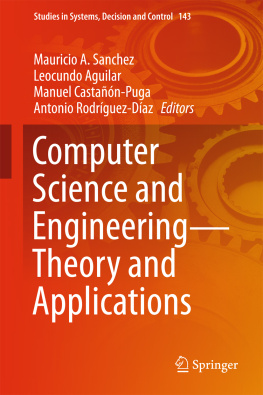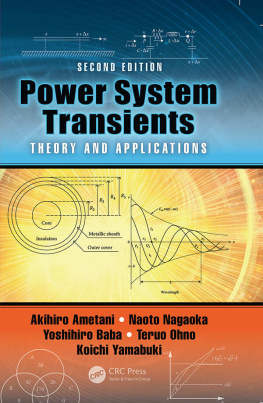Volume 63
Advanced Topics in Science and Technology in China
Zhejiang University is one of the leading universities in China. In Advanced Topics in Science and Technology in China, Zhejiang University Press and Springer jointly publish monographs by Chinese scholars and professors, as well as invited authors and editors from abroad who are outstanding experts and scholars in their fields. This series will be of interest to researchers, lecturers, and graduate students alike.
Advanced Topics in Science and Technology in China aims to present the latest and most cutting-edge theories, techniques, and methodologies in various research areas in China. It covers all disciplines in the fields of natural science and technology, including but not limited to, computer science, materials science, the life sciences, engineering, environmental sciences, mathematics, and physics.
This book series is indexed by the SCOPUS database.
If you are interested in publishing your book in the series, please contact Dr. Mengchu Huang (Email: mengchu.huang@springer.com).
More information about this series at http://www.springer.com/series/7887
Xiang Gao
College of Energy Engineering, Zhejiang University, Hangzhou, Zhejiang, China
Chenghang Zheng
College of Energy Engineering, Zhejiang University, Hangzhou, Zhejiang, China
Pen-Chi Chiang
Graduate Institute of Environmental Engineering, Taiwan University, Taipei, Taiwan, China
Kefa Cen
College of Energy Engineering, Zhejiang University, Hangzhou, Zhejiang, China
ISSN 1995-6819 e-ISSN 1995-6827
Advanced Topics in Science and Technology in China
ISBN 978-981-16-1516-0 e-ISBN 978-981-16-1518-4
https://doi.org/10.1007/978-981-16-1518-4
Jointly published with Zhejiang University Press, Hangzhou, China
The print edition is not for sale in China Mainland. Customers from China Mainland please order the print book from: Zhejiang University Press.
Zhejiang University Press 2021
This work is subject to copyright. All rights are solely and exclusively licensed by the Publisher, whether the whole or part of the material is concerned, specifically the rights of reprinting, reuse of illustrations, recitation, broadcasting, reproduction on microfilms or in any other physical way, and transmission or information storage and retrieval, electronic adaptation, computer software, or by similar or dissimilar methodology now known or hereafter developed.
The use of general descriptive names, registered names, trademarks, service marks, etc. in this publication does not imply, even in the absence of a specific statement, that such names are exempt from the relevant protective laws and regulations and therefore free for general use.
The publishers, the authors, and the editors are safe to assume that the advice and information in this book are believed to be true and accurate at the date of publication. Neither the publishers nor the authors or the editors give a warranty, express or implied, with respect to the material contained herein or for any errors or omissions that may have been made. The publishers remain neutral with regard to jurisdictional claims in published maps and institutional affiliations.
This Springer imprint is published by the registered company Springer Nature Singapore Pte Ltd.
The registered company address is: 152 Beach Road, #21-01/04 Gateway East, Singapore 189721, Singapore
Preface
Since the Industrial Revolution, energy production from various fossil fuels (e.g., coal, crude oil, and natural gas) has rapidly increased worldwide. Although energy utilization has contributed significantly toward global economic and social developments, millions of tons of pollutants are emitted every year from electricity production, industries, transportation, and other sources. The resulting air pollution has massively affected the environment and human health, thus becoming a global concern. Many countries have adopted legislations to regulate the emission of various pollutants to alleviate their adverse effects. After years of development and unremitting governance, air quality all over the world has significantly improved. However, many parts of the world, particularly developing countries, are still facing severe air pollution.
Research efforts in China have led to the development of the best multi-pollutant control technologies in the thermal power industry that are now being employed in other industries. In particular, breakthroughs have been made in the development of an ultra-low emission technology for flue gas pollutants. This book thus provides a detailed overview of recent progresses in air pollutant control technologies ranging from single-pollutant treatment to multi-pollutant control. In the first chapter, types of air pollution and their control issues related to energy utilization are discussed in detail. The principles and applications of pollutant control technology, including catalytic, electric, and absorption methods, and multi-pollutant removal systems and a technology evaluation are then discussed in the subsequent four chapters.
This book provides scientists and engineers with fundamental and applied knowledge associated with multi-pollutant control of flue gases and can also be used as a reference for teachers and students in related fields at educational institutions. Furthermore, the emerging challenges, new methodologies, innovative technologies, and integrated strategies discussed herein could provide researchers, students, engineers, and policymakers with helpful insights for multi-pollutant control.
This book would not have been possible without many contributors whose names did not make it to the cover. We are greatly indebted to our colleagues for their valuable time to proofread this book and suggest changes. Special thanks to our colleagues and students in our research group, including Dr. Yang Yang, Dr. Zhengda Yang, Dr. Xuesen Du, Dr. Xiao Zhang, Dr. Qingyang Lin, Dr. Shaojun Liu, Dr. Yan Lu, Dr. Longchao Yao, Dr. Weiguo Weng, Dr. Hao Song, Dr. Xinbo Zhu, Dr. Jun Zhang, Dr. Shuo Zhang, Dr. Yishan Guo, Dr. Ruiyang Qu, Dr. Wenshuo Hu, Dr. Qianyun Chang, Dr. Pei Yan, Dr. Haitao Zhao, Mr. Yifan Wang, Mr. Zhongyang Zhao, Mr. Qi Xin, Mr. Chang Liu, Mr. Lingyu Shao, Mr. Zhicheng Wu, Mr. Yi Dong, Mr. Mingchu Ran, Ms. Weijia Ren, Mr. Yujie Fu, Ms. Linhang Zhu, Ms. Ying Wang, Mr. Yuhao Shao, Mr. Shangbo Han, Mr. Hao Zhang, Mr. Wenjun Li, Mr. Cong Luo, Ms. Yu Zhang, Mr. Zhong Zheng, Mr. Zhesheng Hua, Mr. Jiaben Wang, Ms. Xiaofan Liu, Mr. Chunbo Pang, Mr. Yongxin Zhang, Mr. Weihong Wu, Ms. You Zhang, Mr. Can Zhou, and Ms. Dian Xu.
This work was supported by the National Science Fund for Distinguished Young Scholars of China (No. 51125025), National Natural Science Foundation of China (No. 50776079, No. U1609212, No. 51836006, No. 52076191), National Key Research and Development Program of China (No. 2016YFC0203701, No. 2017YFB0603201), National Key Technology R&D Program (2011BAA04B08, 2012BAB18B03), and Environmental Welfare Project of Ministry of Environmental Projection of China (No. 201509012).

